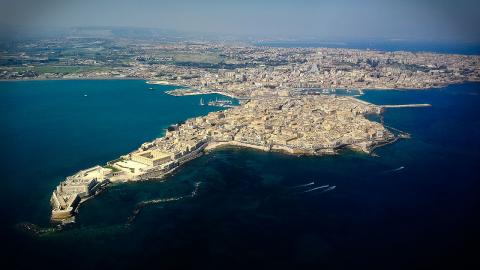
Exploring the enchanting Ortigia Island in Syracuse is a journey through history, art, and culture that captivates every visitor. In this article, we will delve into the picturesque streets and hidden treasures of Ortigia, discovering what makes this place a jewel of Sicily and what one absolutely cannot miss during an unforgettable visit.
Per Cosa è Famosa Ortigia, quali sono i siti da vedere?
Ortigia Island, the beating heart of Syracuse, encompasses an extraordinary historical and cultural heritage that invites visitors to immerse themselves in a journey through the centuries. One of the first places to explore is the Temple of Apollo, located near the entrance of the island and representing the oldest temple, built in 580 BC. This ancient structure dedicated to the god of the sun is surrounded by columns that narrate the grandeur of Greek architecture. Despite the earthquake of 1693 leaving only two of the original 46 columns standing, the Temple of Apollo maintains an enduring charm.
Continuing towards the center of Ortigia along Corso Matteotti, one encounters Piazza Archimede, dedicated to the famous mathematician from Syracuse. The fountain at the center represents the goddess Artemis and recalls the myth of Alpheus and Arethusa, explaining the presence of freshwater just a few meters from the sea. Through Corso Matteotti, you reach Piazza del Duomo, one of the most evocative places in southeastern Sicily. Here, the Cathedral of Syracuse, originally a Greek temple dedicated to Athena, reveals the coexistence of Byzantine, Arab, Norman, and Spanish influences, offering a unique blend of styles and historical periods.
The Cathedral of Ortigia, built in 480 BC, is a masterpiece that has withstood the test of time, preserving original Greek columns and becoming the first Christian church in Europe. The columns from the Temple of Athena, integrated into the structure, add a touch of antiquity and mystery.
Through Piazza Minerva, surrounded by late Baroque buildings, you reach the Fonte Aretusa, a charming freshwater basin with papyrus plants. Tied to an ancient myth, the fountain is the meeting point between the goddess Artemis and the nymph Arethusa. The legend tells of a magical transformation that gave rise to this unique spring.
In the Jewish quarter of Giudecca, the purification baths in the undergrounds of Albergo alla Giudecca and the church of San Filippo Apostolo narrate the history of the Jewish community in Syracuse through rituals of conversion and purification. The church of San Filippo Apostolo, with its frescoed crypt and ossuary in the undergrounds, provides a fascinating insight into the coexistence of different cultures over the centuries.
How to Reach Ortigia Island?
Firstly, it is essential to reach Sicily, and the recommendation is to do so by air, choosing Catania Airport as the destination. From there, you can reach Syracuse by renting a car or taking the train. Once in the city, figuring out how to get to Ortigia is straightforward: simply cross the Umbertino Bridge, an extension of the main street, or the Santa Lucia Bridge. Ortigia is easily explored on foot.
How long does it take to visit Ortigia?
Two days. It's a 1-square-kilometer island connected to the mainland by two bridges. It can be easily explored in one or two days, depending on the attractions you wish to see.
Where to leave the car in Ortigia?
Reaching Ortigia by car is relatively inconvenient, although there are parking spaces on the island itself. However, being chauffeured in an exclusive car, along with an English-speaking driver who can also act as a guide, is an entirely different experience.
